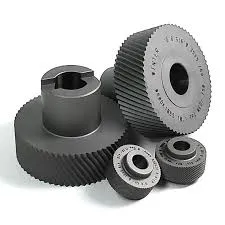
-
 Afrikaans
Afrikaans -
 Albanian
Albanian -
 Amharic
Amharic -
 Arabic
Arabic -
 Armenian
Armenian -
 Azerbaijani
Azerbaijani -
 Basque
Basque -
 Belarusian
Belarusian -
 Bengali
Bengali -
 Bosnian
Bosnian -
 Bulgarian
Bulgarian -
 Catalan
Catalan -
 Cebuano
Cebuano -
 Corsican
Corsican -
 Croatian
Croatian -
 Czech
Czech -
 Danish
Danish -
 Dutch
Dutch -
 English
English -
 Esperanto
Esperanto -
 Estonian
Estonian -
 Finnish
Finnish -
 French
French -
 Frisian
Frisian -
 Galician
Galician -
 Georgian
Georgian -
 German
German -
 Greek
Greek -
 Gujarati
Gujarati -
 Haitian Creole
Haitian Creole -
 hausa
hausa -
 hawaiian
hawaiian -
 Hebrew
Hebrew -
 Hindi
Hindi -
 Miao
Miao -
 Hungarian
Hungarian -
 Icelandic
Icelandic -
 igbo
igbo -
 Indonesian
Indonesian -
 irish
irish -
 Italian
Italian -
 Japanese
Japanese -
 Javanese
Javanese -
 Kannada
Kannada -
 kazakh
kazakh -
 Khmer
Khmer -
 Rwandese
Rwandese -
 Korean
Korean -
 Kurdish
Kurdish -
 Kyrgyz
Kyrgyz -
 Lao
Lao -
 Latin
Latin -
 Latvian
Latvian -
 Lithuanian
Lithuanian -
 Luxembourgish
Luxembourgish -
 Macedonian
Macedonian -
 Malgashi
Malgashi -
 Malay
Malay -
 Malayalam
Malayalam -
 Maltese
Maltese -
 Maori
Maori -
 Marathi
Marathi -
 Mongolian
Mongolian -
 Myanmar
Myanmar -
 Nepali
Nepali -
 Norwegian
Norwegian -
 Norwegian
Norwegian -
 Occitan
Occitan -
 Pashto
Pashto -
 Persian
Persian -
 Polish
Polish -
 Portuguese
Portuguese -
 Punjabi
Punjabi -
 Romanian
Romanian -
 Russian
Russian -
 Samoan
Samoan -
 Scottish Gaelic
Scottish Gaelic -
 Serbian
Serbian -
 Sesotho
Sesotho -
 Shona
Shona -
 Sindhi
Sindhi -
 Sinhala
Sinhala -
 Slovak
Slovak -
 Slovenian
Slovenian -
 Somali
Somali -
 Spanish
Spanish -
 Sundanese
Sundanese -
 Swahili
Swahili -
 Swedish
Swedish -
 Tagalog
Tagalog -
 Tajik
Tajik -
 Tamil
Tamil -
 Tatar
Tatar -
 Telugu
Telugu -
 Thai
Thai -
 Turkish
Turkish -
 Turkmen
Turkmen -
 Ukrainian
Ukrainian -
 Urdu
Urdu -
 Uighur
Uighur -
 Uzbek
Uzbek -
 Vietnamese
Vietnamese -
 Welsh
Welsh -
 Bantu
Bantu -
 Yiddish
Yiddish -
 Yoruba
Yoruba -
 Zulu
Zulu
Price List for Thread Rolling Machines and Their Features
The Price List of Thread Rolling Machines An Overview
Thread rolling machines are essential tools in modern manufacturing, especially in industries that require the production of threaded components. These machines offer a cost-effective and efficient way to create threads on various workpieces. Understanding the price list of thread rolling machines is critical for manufacturers when making investment decisions. This article will provide an overview of the factors influencing the prices of these machines and what potential buyers should consider.
Firstly, the type of thread rolling machine significantly affects its price. There are several types of machines available on the market, including flat die, cylindrical die, and planetary thread rolling machines. Flat die machines are generally more affordable and suitable for small-scale operations. In contrast, cylindrical die machines, which are capable of producing high-precision threads in large quantities, tend to be more expensive. Planetary thread rolling machines, known for their versatility and high production efficiency, are usually positioned at the higher end of the price spectrum.
The Price List of Thread Rolling Machines An Overview
The brand and manufacturer also play a significant role in determining the price of thread rolling machines. Established brands with a reputation for quality and durability often command higher prices due to the perceived reliability of their machines. Additionally, brands that offer comprehensive after-sales service and warranty packages may also charge a premium. It is advisable for buyers to research different brands and read reviews to ensure they are making a well-informed decision.
thread rolling machine price pricelist

Moreover, the region where the machine is produced can influence its cost. Machines manufactured in countries with high labor and production costs, like Germany or the United States, may be pricier than those sourced from countries with lower manufacturing costs, such as China or India. However, it is essential to consider the trade-off between cost and quality, as lower-priced machines may not always meet the required standards for precision and performance.
The current market demand also impacts the pricing of thread rolling machines. During periods of high demand, prices may see a significant increase due to the competitive market. Conversely, during economic downturns or decreased manufacturing activity, prices may lower as manufacturers seek to liquidate inventory. Hence, staying informed about market trends can aid buyers in making timely purchases and possibly securing better deals.
Lastly, an understanding of the total cost of ownership is vital. This includes not only the initial purchase price but also maintenance, operating costs, and any necessary training for staff. Higher upfront costs may be justified by lower operating costs and increased productivity over time.
In conclusion, the price list of thread rolling machines encompasses a variety of factors that potential buyers must carefully consider. By understanding the different types of machines available, evaluating their specific requirements, and being mindful of market conditions, manufacturers can make informed decisions that align with their production needs and budget. Investing in the right thread rolling machine can ultimately enhance efficiency and profitability, making it a crucial aspect of production planning.
